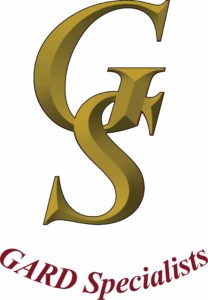Click: http://wildfiremag.com/tactics/air-tankers-progress-future-201205/index.html
Text only:
The United States Forest Service Large Air Tanker Modernization Strategy (10 February 2012) is a qualified assessment of the current deteriorating situation; but it mentions only a few of the options available.
My question: given the situation it finds itself in, i.e., insufficient numbers of aging airtankers, will the USFS now base future decisions and awards on consultations with boots on the fire line and aircrews over the fire about what really works, instead of focusing on academic metrics like Return On Investment and Gallons Per Hour Delivered, irrespective of effectiveness? Will they give priority to items such as:
- · aircraft handling and performance characteristics, and maintainability, in the fire suppression environment
- · drop systems that effectively dispense environmentally friendly retardant, gel, foam, or water in all reasonable application scenarios, including over-the-top extended downhill runs
- · crew/operator experience and demonstrated performance in wildfire suppresion operations
- · state-of-the-art training programs
- · implementation of user-friendly enabling technologies such as Infra-Red spotting and mapping, Synthetic Vision Systems, and Night Vision Goggles, for enhanced S.E.E.(Safety, Effectiveness, Efficiency)
- · enhanced tactics and strategies
- · upgraded training, qualifications, procedures, and authority for dispatchers
- · meaningful field evaluations that include objective criteria for new technologies such as IR imagery
In other words will USFS start focusing on what really enhances S.E.E., instead of grossly oversimplified metrics?
Budgets are restricted and we want to get the biggest bang for the taxpayer’s buck. But if we settle for something just because it’s cheap, that doesn’t do what’s needed on the fire line, what’s the point?
Some combination of AT802/FireBoss, Bae146/Avro RJ, BE200, Dash 8-Q400, CV580, CL415, MD87, B737, and C130 with RADS or MAAFS tank will offer reasonable short-term (15-20 years) interim replacement for, and significant upgrade to, the current LAT fleet capability. Granted, the Large Air Tanker Modernization Strategy by definition only addresses LAT replacement, but promoting a marginally effective surge asset (C130J/AFFS II) as a “core” airtanker , as did this report and the failed RAND study, ignores the toolbox philosophy, or at best gives it mere lip service. NextGen and Legacy LAT, VLAT, scooper, SEAT, and heli-tanker contracts need to be awarded in the context of total aerial fire suppression resources, then properly utilized and dispatched.
The USFS-proposed C130J with AFFS II and part-time pick-up military crews (“Smokey Buys ‘em, Air Force Flies ‘em!) is a useful surge tool, but marginally effective as currently tanked and operated, overly costly in real terms, and inappropriate for true Initial Attack, or as a “core” airtanker. Commercial operators and crews have steadily increased their aerial firefighting effectiveness since 1955. Bumps in the road have been caused by fire agencies’ lack of funding, support, or understanding. It’s hard to see how replacing civilian operators with the military will solve those problems. But better two-way communication within the current structure might produce worthwhile results.
Taking that a step further, will U.S. fire agencies ever start consulting and working with industry to develop a true purpose-built Next Generation airtanker(s) to provide superior protection for our wildland resources, and lives/property, from increasingly devastating mega fires? If so, they need to start now if they want it to be operational in 15-20 years. But we can start addressing issues such as dispatching, tactics, and strategy today, at minimal cost.
As noted in the modernization strategy, response speed is a vital component of Initial Attack success. And the reported 2% of wildfires that advance to Extended Attack supposedly account for 85% of fire suppression costs. But aircraft speed is only one component of response speed. For instance, location of the aircraft at the time of dispatch, and distance between the fire and the reload base or scoop site, are usually more significant than aircraft speed. With only 11, 18, or even 24 airtankers spread between Florida and Alaska, true Initial Attack is difficult, if not impossible, to implement, even with 300 knot aircraft. And airspeed is often restricted well below 250 knots by FAA and Fire Traffic Area regulations. Taking into account increased fire activity and devastation, we need more airtankers, appropriately positioned. We need to be thinking in terms of 40-50 or more Type 1-3 airtankers, plus Single Engine Air Tankers (SEATs), Very Large Air Tankers (VLATs), and Type 1 helitankers, just to return to the relative coverage we had in 2002. Not cheap, but we do have a choice; we can pay now, or we can pay later.
Current VLATs —DC10 and B747— are extraordinary tools for combating Extended Attack and mega fires, but their spotty utilization and dysfunctional USFS dispatching has not allowed them to achieve their full potential. For them to be cost-effective, dispatchers must be trained regarding VLAT capabilities and limitations, then given the authority and mandate to dispatch them in a timely and appropriate manner. Few if any dispatchers currently brief or debrief airtanker crews, let alone visit airtanker bases or ride as observers on live missions.
All airtanker flight crews, from SEATs to VLATs, should be trained and vetted to Initial Attack standards. There is no logical reason to require a properly trained and qualified VLAT crew to follow a specially qualified, dedicated leadplane on a drop (the B747 was used successfully without a lead in Israel and Mexico). “An approach to a landing followed by a go-around”, at one point used as a justification by some for using VLAT crews that were minimally trained in aerial firefighting, is not a professional, effective, or acceptable attitude or technique that works in today’s aerial fire suppression operations.
USFS needs to start seriously evaluating both dedicated and multi-mission amphibious airtankers. Beriev BE200 and the AT-802 FireBoss are not even mentioned in the USFS report, let alone the proposed ShinMaywa US-2, Marsh Wildfire G-111 Wildfire, or AVIC Dragon 600 scoopers. Prioritized mission sharing of these expensive but versatile aircraft with DoD, DEA, USCG, Homeland Security, FEMA, and Border Patrol might be an option to consider. L.A. County, Minnesota, Washington state, Canada, and much of Europe have used scoopers effectively for well over two decades. Why not other appropriate areas of the USA?
USFS might want to start thinking and planning ahead for international cooperation and collaboration, instead of just reacting ad-hoc (if at all) to requests for assistance on wildfires outside our borders.
Will fire agencies do the right thing and finally start collaborating with firefighters at the tip of the spear, in the air and on the fire line, or will they succumb to chic think tank studies and slick OEM lobbyists performing polished dog-and-pony shows with professionally produced Power Point presentations? Cal Fire provides a pretty good model of how to involve all shareholders in addressing challenges and opportunities. Other fire agencies might do well to consider talking with the troops more, and listening to what they say. A point of reference; the only italicized sentence in the 2002 Blue Ribbon Panel report: Possibly the single largest challenge now facing leaders of these federal agencies is to foster cooperation and collaboration among working-level staffs, contractors, and states to raise the standards of aerial wildland firefighting in the United States.
Has any one acted on that advice?
Finally, it is unrealistic to expect an operator of multi-million-dollar airtankers to survive, let alone provide reliable response and service, with current Call-When-Needed (CWN) arrangements. At the very least, some sort of basic retainer should be awarded to cover costs of maintaining aircraft airworthiness and crew currency to contract and FAA standards. When we need them, we really need them. Imagine SEAL Team 6 on a CWN contract.
So—instead of another well-intentioned study (that seem to inevitably fade into the sunset) by an academic think-tank that has probably never smelled wildfire smoke, let alone fought one, how about something with traction? How about an accountable, action-oriented aviation working group comprised of agency, industry, and line pilots/mechanics, tasked with developing specific proposals to be delivered by or before a given date, addressing real-world aerial fire suppression issues? With published follow-up reports on action taken. The time has come for action instead of endless closed-door deliberation searching for a perfect solution. “Ready, Fire, Aim!” Check it out, try it out, evaluate results, then decide on commitment. Instead of “analysis paralysis”.
Or do we just wait for another Wallow or Station Fire, or a Storm King Mountain burn-over?
Time is of the essence.
Walt Darran
Safety Committee Chairman, Board of Directors, Associated Aerial Firefighters
“There is nothing wrong with change, if it in the right direction.”
Winston Churchill











Speak Your Mind
You must be logged in to post a comment.